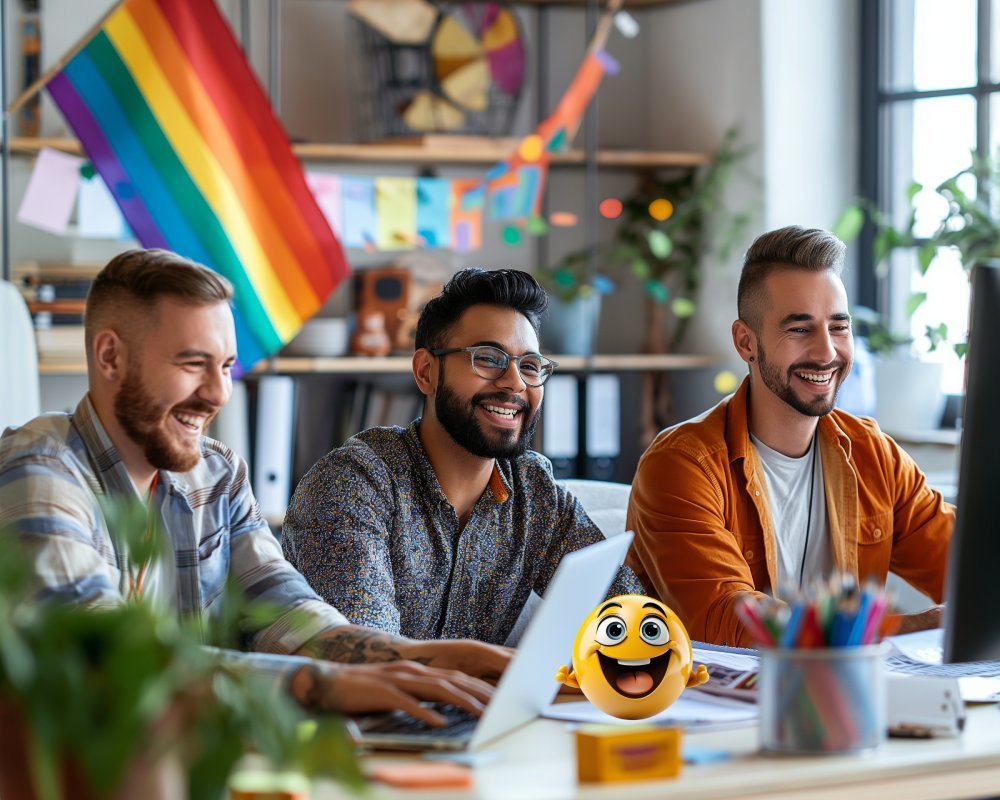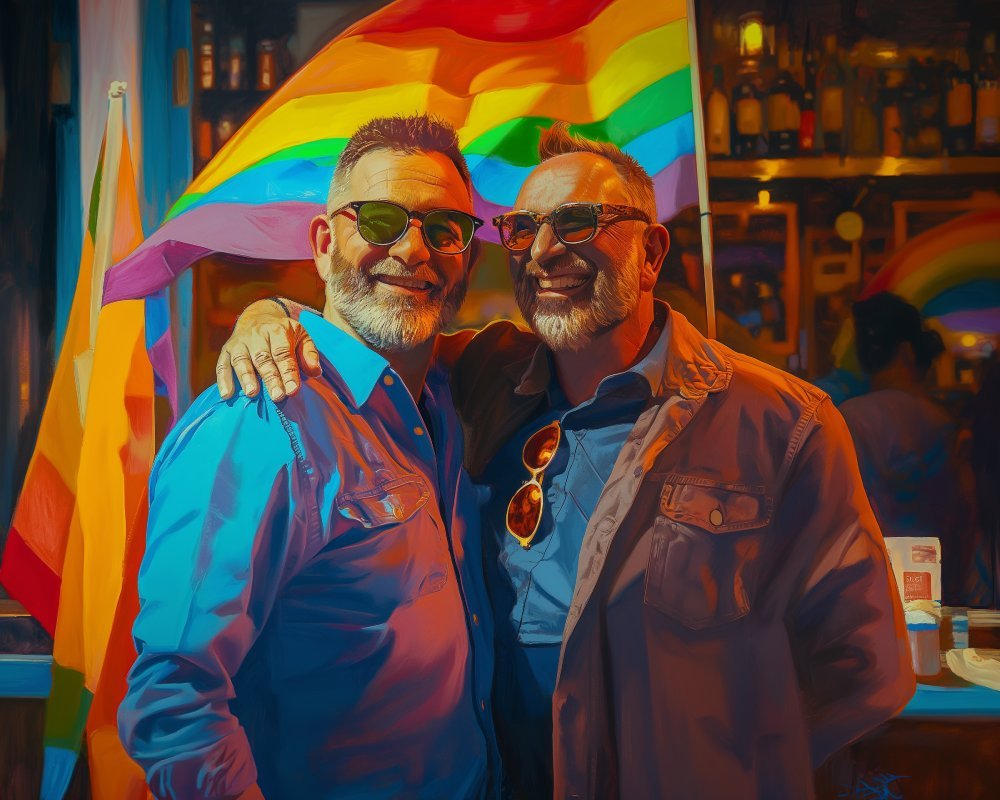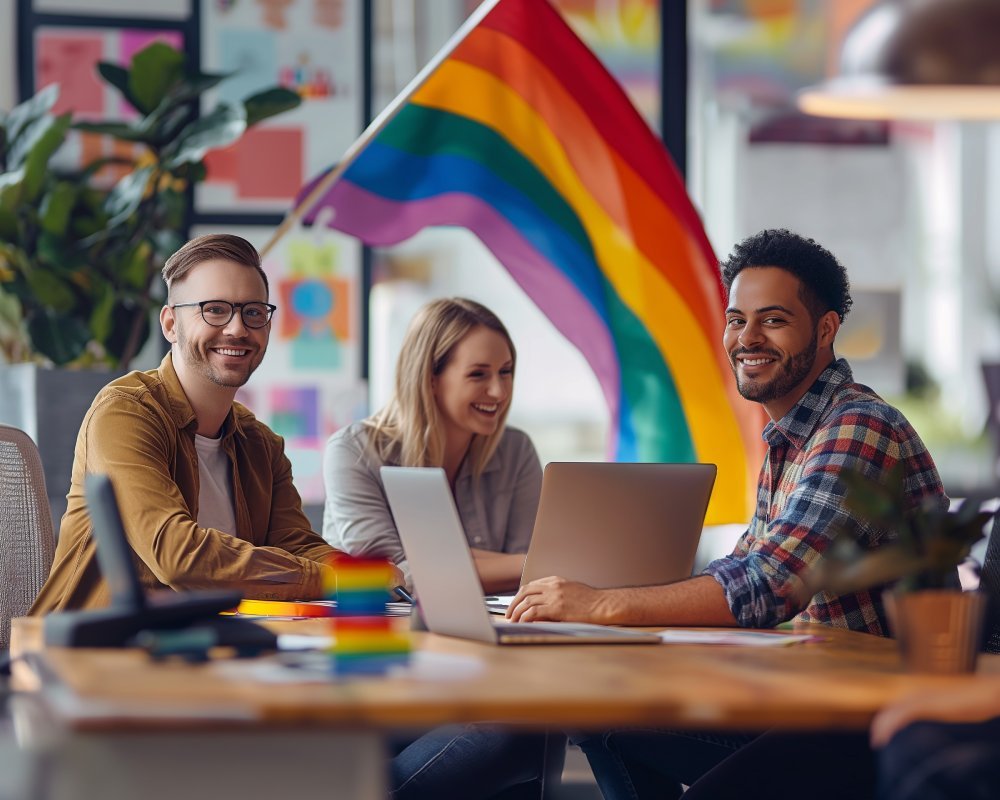
Why Is There a Stigma Around Gay Relationships? – Why is there a stigma around gay relationships? This pervasive question haunts many in the LGBTQ+ community. Despite strides towards acceptance, many gay, lesbian, bisexual, transgender, and queer individuals continue to face discrimination and misunderstanding. These issues are rooted in social, cultural, and historical factors that have long stigmatized LGBTQ+ identities. In today’s world, where diversity and inclusivity are being championed, it remains crucial to understand the depth of these stigmas and work towards dismantling them. At Gay Thrive LGBTQ+ Marketing Agency, we believe that shedding light on this topic not only helps the community itself but also educates businesses to connect authentically with diverse audiences. As we explore the roots and repercussions of the stigma associated with gay relationships, remember that promoting understanding is a shared responsibility. Dive into this comprehensive analysis to explore why such stigmas exist and how society can evolve to support love in all its forms.
Historical Perspectives: Origins of Stigma in Gay Relationships
The stigma around gay relationships is not a novel phenomenon; it has roots deep within history. Centuries ago, many cultures celebrated diverse sexual orientations, with ancient civilizations like Greece and Rome recognizing relationships between individuals of the same sex. Yet, as religious and societal norms evolved, these practices were increasingly condemned. The spread of Christianity played a critical role as homosexual acts began to be labeled sinful, marking a shift in societal attitudes. Legal prohibitions followed, punishing those who diverged from heterosexual norms. Over time, discrimination became institutionalized, as laws and policies perpetuated negative stereotypes. Understanding these historical contexts is essential for interpreting why there is a stigma around gay relationships. Today’s perceptions are shaped by these historical prejudices, necessitating a concerted effort to dismantle the lingering biases through education and policy reform. Today’s evolving societal landscape can learn from these past missteps to foster greater inclusivity.

Why Is There a Stigma Around Gay Relationships? Examining Social Factors
Society often molds opinions and prejudices, which can explain why there is a stigma around gay relationships. Heteronormativity, the presumption that heterosexuality is the norm, continues to overshadow LGBTQ+ narratives. This societal framework can unfortunately demean same-sex relationships, leading to marginalization. Cultural traditions and family expectations also heavily influence perceptions, casting a shadow over acceptance of gay, lesbian, transgender, queer, and bi individuals. Media representations have historically played into these biases, often portraying LGBTQ+ individuals in negative or stereotypical roles. This misrepresentation can fortify stigma, making it harder for authentic LGBTQ+ stories to thrive. Ultimately, these social factors necessitate proactive storytelling and representation in all realms of life to inspire empathy and understanding. Only with continuous effort and redefining narratives can society begin to dissolve these deep-seated stigmas, promoting equality across all spectrums.
Advertisement · Scroll to continue
Recommended
The Role of Religion in Cultivating Stigma Around Gay Relationships
Religion can both unify and divide, often perpetuating the stigma surrounding gay relationships. For centuries, major world religions have held views that traditional heterosexual relationships are the only acceptable norm. Interpretations of religious texts have historically condemned LGBTQ+ identities, framing them as contrary to divine intentions. This belief system has ingrained homophobia into the cultural fabric of many societies, influencing laws, policies, and personal prejudices. Notably, religious adherence varies widely, and many modern religious movements have embraced more inclusive interpretations. By promoting dialogue that respects religious diversity while encouraging acceptance, faith communities can play a pivotal role in reducing stigma. Facilitating conversations between LGBTQ+ individuals and religious groups can foster understanding and bridge divides. It’s crucial for both religious entities and LGBTQ+ advocates to engage in empathetic exchanges that honor individual beliefs while advocating for universal human rights.

Intersectionality: How Race and Gender Influence Stigma
Understanding why there is a stigma around gay relationships requires examining the intersection of various identities, such as race and gender. Stigma is not experienced uniformly; it intersects with other forms of discrimination, creating unique challenges for individuals. For instance, a transgender woman of color may face a compounded stigma due to her race, gender identity, and sexual orientation. This intersectionality can exacerbate discrimination, leading to cultural alienation and systemic disadvantages. Moreover, racial stereotypes further entrench biases against LGBTQ+ individuals of color, complicating their navigation through society. Acknowledging these intersecting identities is essential for creating effective strategies to combat stigma. Strategies must account for the diverse experiences within the LGBTQ+ community to be truly inclusive. By fostering a nuanced understanding of these dynamics, societies can work towards comprehensive equality, empowering all individuals to express their authentic selves without fear of prejudice.
Media Representation and Its Impact on Stigmatizing Gay Relationships
Media plays a significant role in shaping public perception and can perpetuate stigma around gay relationships. Television, film, and literature influence societal norms and values, often reinforcing stereotypes. Historically, LGBTQ+ characters were portrayed as one-dimensional or used as comedic relief, which contributed to the trivialization of their lived experiences. However, the emergence of authentic LGBTQ+ stories and characters challenges these outdated portrayals. Positive representation in media can inspire empathy and understanding, allowing audiences to connect with diverse stories. The responsibility lies with content creators to prioritize authenticity and inclusivity. Collaborative efforts between media industries and LGBTQ+ communities can pave the way for narratives that accurately reflect the multifaceted experiences of gay, lesbians, transgender, queer, and bi individuals. By amplifying underrepresented voices, media can play a pivotal role in reducing stigma and fostering acceptance in society.

Advertisement · Scroll to continue
Recommended
Why Is There a Stigma Around Gay Relationships? Public Policy and Legal Discrimination
Laws and policies often mirror societal attitudes and have historically contributed to the stigma surrounding gay relationships. Legal discrimination against LGBTQ+ individuals persists in various forms, from marriage inequality to employment discrimination. These barriers reinforce perceptions that gay relationships are inferior or unnatural. Efforts to enact anti-discrimination laws have made significant progress in promoting equality but still face opposition in many regions. Legal reforms can dismantle deeply-rooted prejudices by creating environments where LGBTQ+ individuals can thrive without fear of reprisal. Governments play a crucial role in enforcing policies that promote inclusivity and protect the rights of all citizens. Public advocacy and awareness are vital to holding policymakers accountable and pushing for reforms. As legal landscapes evolve, they must meet the diverse needs of LGBTQ+ communities, so individuals are free to love whom they choose without societal condemnation.
Why Is There a Stigma Around Gay Relationships? Strategies for Overcoming and Embracing Acceptance
Addressing why there is a stigma around gay relationships involves strategic efforts from individuals, communities, and institutions. One pivotal strategy lies in education. Comprehensive education fosters understanding from a young age, addressing the roots of prejudice and promoting empathy. Prioritizing LGBTQ+ inclusive curriculums in schools can prepare future generations to embrace diversity and challenge stereotypes. Community engagement also plays a vital role, enabling LGBTQ+ individuals and allies to unite in support of one another. Building inclusive spaces encourages dialogue, acceptance, and activism, empowering those affected by stigma. Businesses, like Gay Thrive LGBTQ+ Marketing Agency, have the responsibility to promote inclusive marketing strategies, reflecting diverse identities and fostering authentic connections. Every effort counts towards creating a society where all relationships are valued equally, shifting the narrative from one of stigma to one of acceptance.

The Future of LGBTQ+ Acceptance: Building a More Inclusive World
As we strive towards a more inclusive future, examining why there is a stigma around gay relationships remains essential to achieving widespread acceptance. Advancements in attitudes and policies pave the way for significant progress in LGBTQ+ rights globally. Grassroots activism and increased representation are already catalyzing change, slowly dismantling barriers and reshaping societal perceptions. Continued advocacy must ensure that equality reaches every corner, supporting those still facing marginalization. As societies evolve, engagement across all sectors—from government to education to business—remains crucial to cultivating change. The future is bright for LGBTQ+ acceptance, but it relies heavily on collective responsibility and commitment to inclusivity. By learning from past challenges and building on current momentum, we can foster a future where love, in all its forms, is celebrated without stigma or discrimination.
Promoting LGBTQ+ Inclusivity in Education
Education is a cornerstone in combating stigma and promoting LGBTQ+ inclusivity. Implementing curriculums that highlight diverse identities fosters understanding and counteracts stereotypes from an early age. Teaching about LGBTQ+ history and contributions informs students of the community’s pivotal role throughout society. Schools that establish inclusive policies and provide support for LGBTQ+ students create environments of empowerment and acceptance. By equipping educators with resources to address LGBTQ+ topics, barriers to inclusivity and understanding can be broken down. Education is not merely a tool for the younger generation but a catalyst for societal transformation. Ensuring that educational institutions prioritize acceptance can lead to a more informed and empathetic society, paving the way for future generations to thrive without stigma.
Leveraging Marketing to Connect with LGBTQ+ Audiences
Businesses play a critical role in challenging stigma by leveraging marketing strategies to connect with LGBTQ+ audiences authentically. Acknowledging why there is a stigma around gay relationships helps companies tailor their messaging to resonate with diverse identities. By highlighting real stories and promoting representation, businesses can align their values with inclusivity. Collaboration with LGBTQ+ advocates ensures that marketing efforts accurately reflect the community’s needs and desires. Developing products and services that cater to LGBTQ+ individuals showcases a commitment to understanding and supporting diverse experiences. Marketing agencies like Gay Thrive LGBTQ+ Marketing Agency specialize in helping businesses navigate these dynamics, leading to meaningful connections beyond transactions. In fostering inclusivity, businesses not only expand their reach but also contribute to broader societal acceptance.
The Role of Allies in Combating Stigma
Allies hold significant power in combating the stigma surrounding gay relationships. Understanding why there is a stigma around gay relationships enables allies to advocate effectively, stepping forward in solidarity with LGBTQ+ individuals. Allies amplify marginalized voices, helping to challenge stereotypes and misconceptions. Their support can be transformative, influential in legislative changes and community initiatives. Allies promote visibility, offering unwavering support while respecting the autonomy and experiences of the LGBTQ+ community. Allies also play a vital role in challenging harmful discourses within their circles, engaging in conversations that promote understanding. By building bridges between communities and fostering dialogue, allies can help dismantle outdated prejudices, driving momentum towards inclusivity and acceptance.
Empathy: The Path to Overcoming Stigma
Empathy fosters the understanding necessary to overcome why there is a stigma around gay relationships. By engaging in authentic dialogue and listening, individuals can grasp the challenges faced by LGBTQ+ individuals, leading to informed perspectives and actions. Empathy empowers individuals to advocate passionately for equality, understanding that discrimination affects not just LGBTQ+ people but society as a whole. Encouraging empathy through storytelling can demystify unfamiliar experiences, creating connections that transcend prejudice. Society thrives when everyone feels valued, inspiring innovations derived from diverse perspectives. Building a world driven by empathy ensures that all forms of discrimination are addressed, promoting a future where acceptance and love prevail.
In closing, addressing the question of why there is a stigma around gay relationships requires a multi-faceted approach. The intersection of history, society, culture, religion, and policy plays a significant role in shaping perceptions. However, through education, advocacy, and inclusive representation, there is hope for change. By fostering understanding and empathy, society can dismantle outdated stigmas, creating a world where every relationship is celebrated for its authenticity and love. The journey towards acceptance is ongoing, but with collective effort, a future devoid of discrimination is within reach. Let’s continue to challenge stigmas, support LGBTQ+ rights, and inspire future generations to embrace everyone, regardless of whom they love.
Advertisement · Scroll to continue

More Recommended
Embracing Diversity: The Rise of Gay-Friendly Businesses in Marketing
Embracing Diversity: The Rise of Gay-Friendly Businesses in Marketing In today’s ever-evolving business landscape, companies [...]
Inclusivity in Action: How Lesbian-Owned Businesses are Championing Diversity in Advertising
How Lesbian-Owned Businesses are Leading the Way In today’s increasingly diverse society, representation and inclusivity [...]
The Importance of Gay Advocacy in Promoting Equality
The Importance of Gay Advocacy in Promoting Equality – The Importance of Gay Advocacy in [...]
Why Is Gay Representation in TV Shows Important?
Why Is Gay Representation in TV Shows Important? – Representation matters. It is a phrase [...]
Targeting Love: How Retail Giant is Celebrating Diversity with Lesbian-Focused Campaigns
Celebrating Diversity with Lesbian-Focused Campaigns As society becomes more inclusive and accepting of diversity, it [...]
Where Are the Gay-Friendly Cities?
Where Are the Gay-Friendly Cities? A Comprehensive Guide to the World’s Most LGBTQ-Inclusive Destinations 1. [...]
The Rise of LGBTQ+ Influencers in Advertising
The Rise of LGBTQ+ Influencers in Advertising – In today’s digital age, influencers have become [...]
Why Pride Month Advertising is Important for LGBTQ+ Brand Visibility
Why Pride Month Advertising is Important for LGBTQ+ Brand Visibility – In today’s world, marketing [...]
The Power of Gay Voices in the Fight for Equality
The Power of Gay Voices in the Fight for Equality – The fight for equality [...]